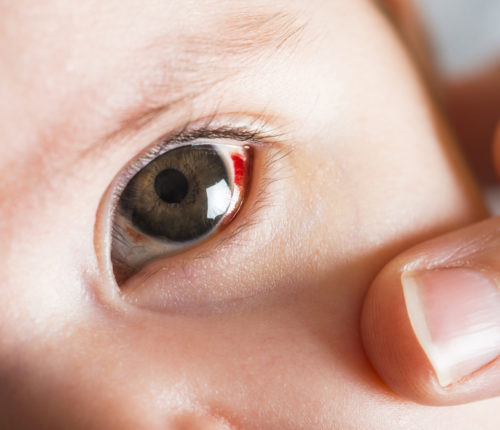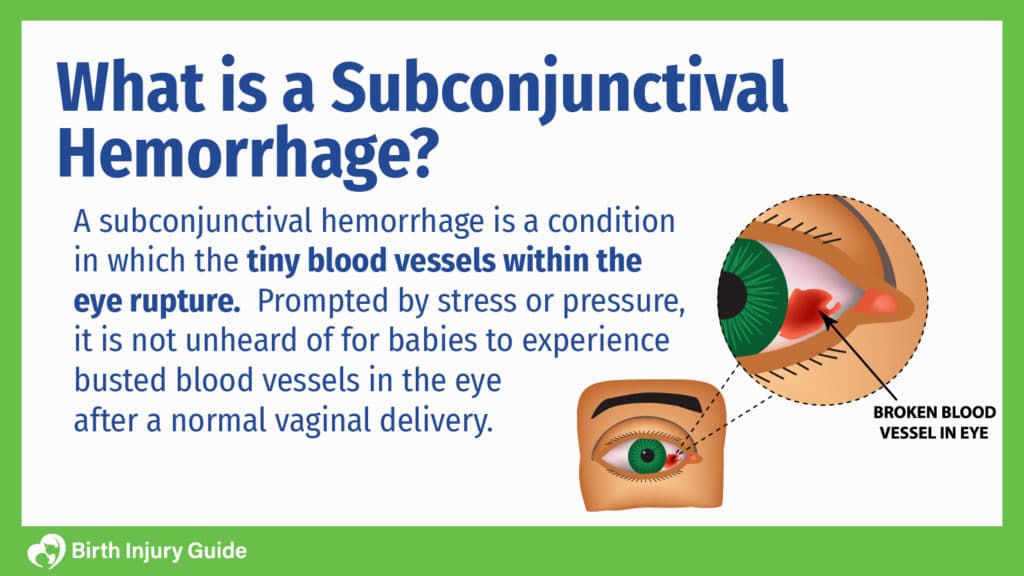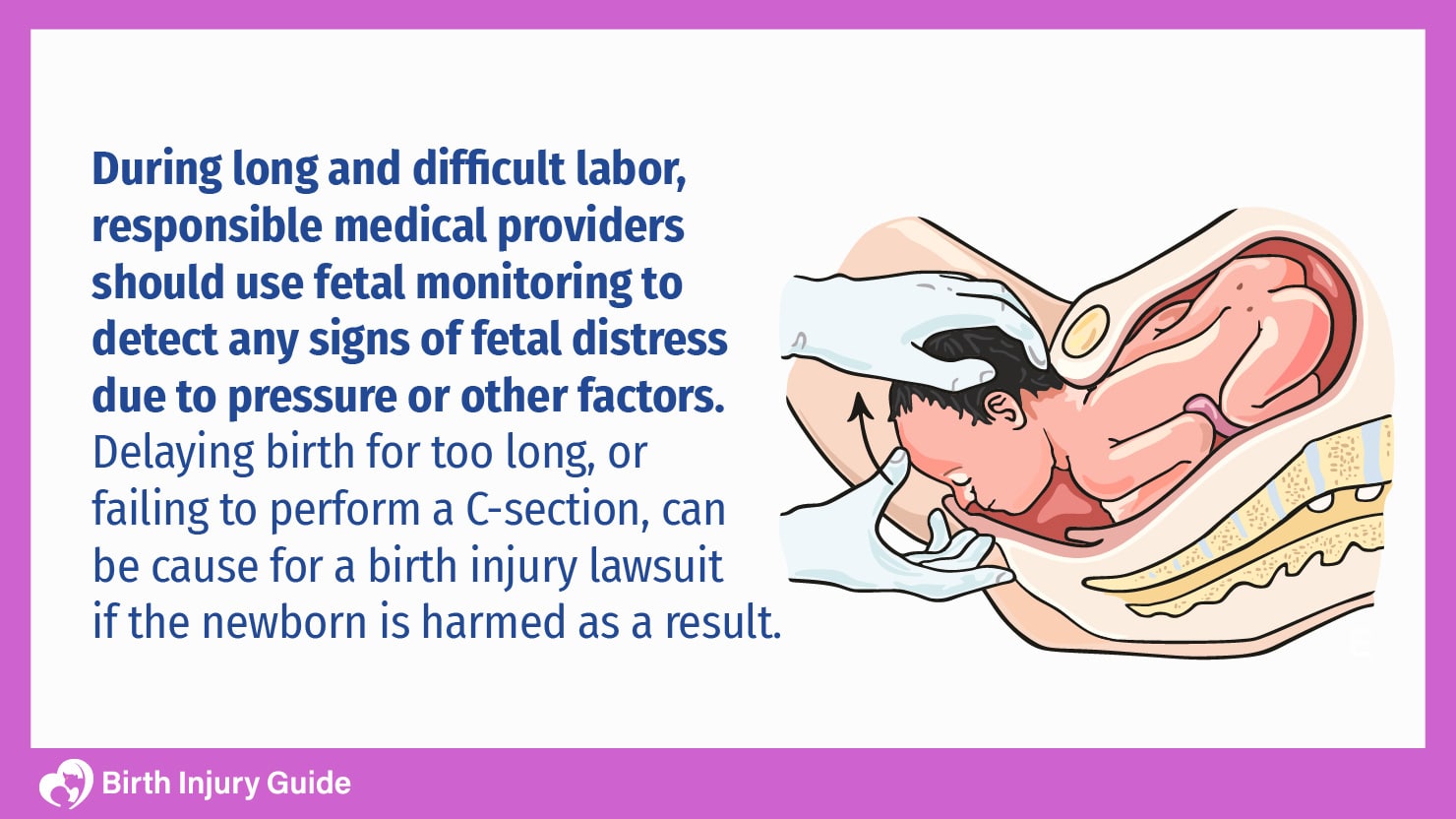
Fans: Duggar Baby Has Subconjunctival Hemorrhage?
Instagram photos from proud mom Jessa Duggar, now Jessa Seewald, are prompting speculation about the health of the newest addition to the “Counting On” family. Eagle-eyed fans admiring pictures of the newborn spotted classic signs of a subconjunctival hemorrhage, also called a subconjunctival hematoma. Fans pointed out the bright red discoloration in the white of the eye. Discoloration that could indicate a ruptured or broken blood vessel.
Jessa Seewald has a compelling Instagram presence. She frequently posts pictures of her children and family life, and her fans can’t seem to get enough. When she introduced her newborn to the world via Instagram, her fan base had a lot to say about little Ivy Jane.

Dotted among comments about Ivy’s blue eyes and thick black hair are expressions of concern for her health.
Worrisome Skin Tone?
Several fans commented on the baby’s skin tone. Some asking why she looks so red with one even going so far as to ask why she is “purple?” A debate sprung up among followers about whether Ivy’s skin tone is normal. According to Stanford Children’s Health, normal skin tones for newborn babies range from dark red to purple. Skin tone gradually lightens over the first weeks of life. Babies born without the use of an epidural tend to be redder than babies whose mothers choose the pain-relief intervention.
Even without any details confirmed by the Seewald family, it is certainly reasonable to assume a home birth did not involve an epidural. Consequently, the birth would result in a particularly pink newborn.
When to Worry About a Newborn’s Skin Tone
Red skin color is not what should alarm new parents, but rather they should be alert for a yellow cast of complexion. Yellow skin and eyes are the symptom of jaundice, and many newborns experience it to a degree.
Severe jaundice is a serious condition that needs immediate medical attention. The yellow discoloration comes from an excess of bilirubin, the by-product of breaking down red blood cells that the newborn’s immature liver cannot process effectively. Bilirubin is toxic to brain tissue and an overabundance can lead to kernicterus – a serious complication that damages the baby’s brain.
Red Marks in the Eye – Subconjunctival Hemorrhage?
At about one month old, Ivy Jane Seewald is past the age of concern for jaundice, but fans still have concerns about her blue eyes. In two of the Instagram photos shared by Jessa Seewald, the newborn has a distinctive red mark in the white of her right eye adjacent to the iris. Fans could not help but comment and ask about the mark.
The fans’ consensus? Ivy Jane has a subconjunctival hemorrhage. But just what is a subconjunctival hemorrhage?
What is a Subconjunctival Hemorrhage?
A subconjunctival hemorrhage is a condition in which the tiny blood vessels within the eye rupture. Prompted by stress or pressure, it is not unheard of for babies to experience a broken blood vessel in the eye after a normal vaginal delivery. It is much less common in c-section deliveries.

One study showed about 1.4 percent of live births involve a subconjunctival hemorrhage. This condition can happen at any age and for a variety of factors including:
- Strenuous exercise
- High fevers
- Use of anticoagulant medications, like warfarin-based products
- Vascular disease
- Trauma to the eye area
- Contact lens usage
In newborns, many cases of subconjunctival hemorrhage are caused by the pressure on the infant’s head in the birth canal.
Is a Subconjunctival Hemorrhage Serious?
Most cases of subconjunctival hemorrhage are not serious. Usually the condition will clear up without any treatment after several weeks. Luckily, there are no pain receptors on the surface of the eye, so the redness does not cause babies any pain. In some cases it may trigger itchiness, or the baby may attempt to rub at the eye. In these cases, a physician will recommend the use of artificial tears. More severe subconjunctival hemorrhages may not resolve on their own and can result in permanent damage to the eye. A complication of this sort is rare, however.
When is a Subconjunctival Hemorrhage a Birth Injury?
In some cases, a subconjunctival hemorrhage is not the normal consequence of a vaginal delivery, but rather the evidence of trauma. When a subconjunctival hemorrhage is caused by a physician or midwife’s negligent actions, the condition is a birth injury.

Long and difficult labor can place unnecessary pressure on a baby’s head during labor. During long and difficult labor, responsible medical providers should use fetal monitoring to detect any signs of fetal distress. This way, they can act immediately to deliver the baby via Cesarean section (C-section) if necessary. Delaying birth for too long, or failing to perform a C-section, can be cause for a birth injury lawsuit if the newborn is harmed.
The Use of Excessive Force During Delivery
Among babies born vaginally, a subconjunctival hemorrhage may be a sign of birth injury. The use of excessive force during delivery can cause this condition and be a warning sign of severe injuries. Using excessive force during delivery is most commonly associated with the use of delivery assistance tools, such as forceps or vacuum extractors.
Applying these tools too forcefully can cause a subconjunctival hemorrhage and may indicate more serious birth injuries such as:
- Facial paralysis
- Brain damage
- Skull fracture
- Nerve damage
- Spinal Injury
Diagnosing Infant Subconjunctival Hemorrhage
Parents can identify signs of a subconjunctival hemorrhage by looking for the telltale bright red discoloration in the eye. After experiencing trauma, the redness usually appears fairly quickly. If your baby doesn’t have a busted blood vessel in the eye, there should be no red marks in the eye. This is, of course, unless the child experiences head trauma during that time.
Doctors can diagnose a subconjunctival hemorrhage by a visual inspection. Again, it is usually not a cause for concern, though its appearance is startling. After the initial appearance of the hemorrhage, the redness may cover all the white of the eye before receding. If the redness doesn’t improve within a couple of weeks, parents should seek medical attention.
Did Your Baby Suffer Trauma During Birth?
It is natural for friends and family members to express concerns about a newborn’s health, especially if her or she appears discolored or injured in any way. However, it is best to leave diagnosis up to medical professionals. For parents, if you suspect that your child was injured during birth, first of all, seek medical attention to address your concerns.
Next, contact a birth injury attorney if you suspect that your medical team failed to provide you and your child with the care to which you are entitled. If your child suffered a subconjunctival hemorrhage or any other birth injury, call 1-877-415-6603 or contacting us online.

